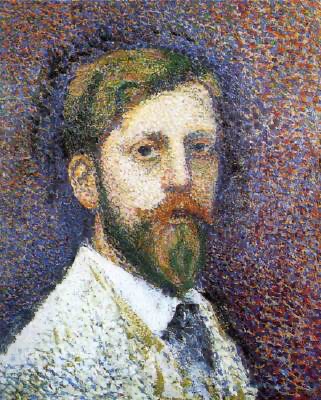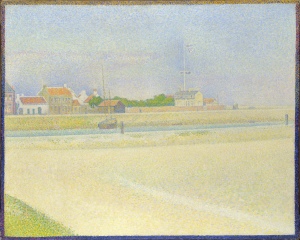




Celebrating the 162nd anniversary of Georges Seurat’s birth

Born in Paris on the 2nd of December 1859, Georges Seurat is best known as a post-impressionist painter who devised a new painting technique based on the human perception of colours. Seurat departed from the artistic approach of his contemporaries inventing a new painting technique that consisted in applying a moltitudine of little dots of painting on the canvas, to render an image that the human eye is processing as a highly nuanced and shimmering surface. This technique was quite a departure from the plein air painting of the impressionists as it required a good degree of studying and preparation before the final rendering. This technique was later defined as pointillism and was included in the all encompassing movement of post-Impressionism.

After some experimentation on smaller canvasses, Seurat decided to project his new detailed painting technique to very large surfaces and embarked upon the composition of an imposing image of more than 2 x 3 metres, Une baignade, Asnières – Bathers at Asnières. This was of course a very labour-intensive project given the technique used for the definition of the overall image. The subject chosen was a summer scene by the river with young bathers and people enjoying the sunshine on the riverbanks. The background was the industriano skyline of Asnières, in the outskirts of Paris. The sunlit scene was particularly suited to the pointillism technique as it gives a special glow to bodies and contour of shapes and projects to the viewer the idea of the summer heat.

A couple of years later Seurat worked on another large painting set in a similar location, this time playing with shadows and lights, Un dimanche après-midi à l’Île de la Grande Jatte – A Sunday afternoon at the Island of the Grande Jatte. Both paintings were not received with great success with the contemporary public or art critics. They became iconic images and inspiration for other artistic movements during the nineteenth century.

This is one of four paintings Seurat produced in 1890 near the town of Gravelines, a small port on the northern French coast between Calais and Dunkirk. Positioned on the sand dunes of Petit-Fort-Philippe, we see the shore in the morning light after the receding tide has left a broad expanse of open beach in the foreground. Using the horizontal blue stripe of the channel, Seurat divides the painting into two near-equal halves of sky and sand. The vertical lines of the masts and signal tower are echoed just below by two mooring posts, subtly connecting these two halves .Seurat covers the canvas with a shimmering mosaic of dots and strokes of unblended paint to create subtle gradations of luminous tone. He has also added a painted border of coloured dots. Each section of the border complements the adjacent area of the picture to intensify the impact of the colour.
You can follow me also on my other social media channels:
and subscribe to email updates from this blog:



2 thoughts on “Georges Seurat 🖼🖌👩🎨”